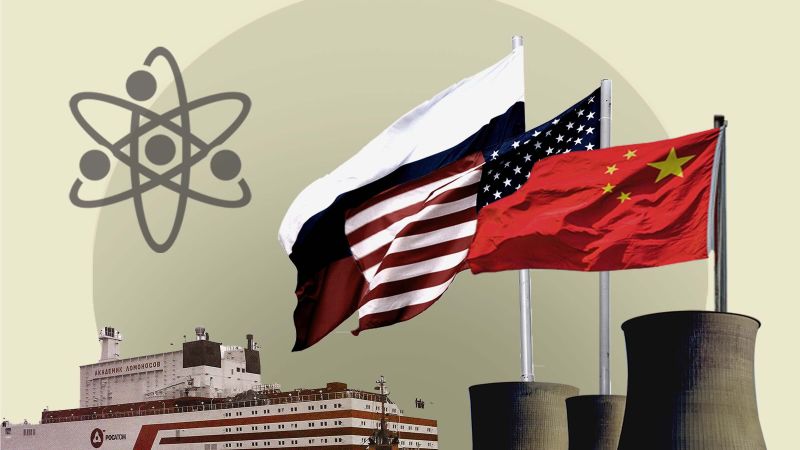Off the Siberian coast, not far from Alaska, a Russian ship has been docked at port for four years. The Akademik Lomonosov, the world’s first floating nuclear power plant, sends energy to around 200,000 people on land using next-wave nuclear technology: small modular reactors.
This technology is also being used below sea level. Dozens of US submarines lurking in the depths of the world’s oceans are propelled by SMRs, as the compact reactors are known.
SMRs — which are smaller and less costly to build than traditional, large-scale reactors — are fast becoming the next great hope for a nuclear renaissance as the world scrambles to cut fossil fuels. And the US, Russia and China are battling for dominance to build and sell them.



this is true. But the technicalities present are immense and would require some significant mathematical modelling in order to optimally determine the solution.
The primary issue with long distance transmission is that unless it’s one singular line, it’s really difficult to know where power is going. It’s realistically going to take the path of least resistance, but what this path is, where it is, and where it goes is complicated. If you have a long distance transmission line from point A to point B it’s much much simpler and a lot easier to deal with.
A particular example would be alaska, particularly farther north, where the sun gets really bizarre in the winter. That’s a prime candidate for anything that isn’t solar basically. Wind might even be problematic with the temperatures there. Nuclear however? Great starting point.
It’s hard to phrase it, but basically. hyper local generation is going to be more important than long distance transmission with renewables, particularly wind, it’s just more efficient that way. Even if norther solar panels produce less power than more southern panels, it might actually make sense to have them there, due to transmission complexities, losses, and just general shenanigans. (if one significant transmission line goes down an entire grid can fail)
If you were to just plonk down a plant in arizona for instance, and hook it up to the local grid. That power is going places. Where exactly? Nobody knows! It could be literally anywhere within the grid! Heres a particularly good demo of this
You could very well export lots of solar and wind, but honestly, i think it’s just going to be more feasible to properly manufacture nuclear power, until we can get fusion power to be a thing that exists. It’s stable, flexible, and we know it’ll work. As anybody would in CS would tell you, it’s a heuristics problem, and heuristics suck. They’re relatively accurate, and give good information, but they are a pain in the ass to develop. Though i guess if solar manages to do that for cheaper it just doesnt matter lol.
(also in case you’re wondering, they’re using HVDC cuz it’s undersea transmission. They might also run at different frequencies? I dont know.)
We’re in desperate need of an upgraded grid anyway, that’s a separate issue from nuclear. It needs to be able to carry power over long distances, incorporate local generation and intelligently route power to where it’s needed. It also needs to be robust enough to keep hackers out.
Even though it’s a separate issue, if we build that then nuclear makes even less sense.
i suppose so. That’s another heuristics nightmare though. That or it will take centuries lol.
Also intelligently routing power technically already happens, just based on the nature of the network. I suppose certain automated segmentations could help though. Realistically if we want a fully decentralized grid network it needs to be on a town/city basis, rather than a county/state basis.